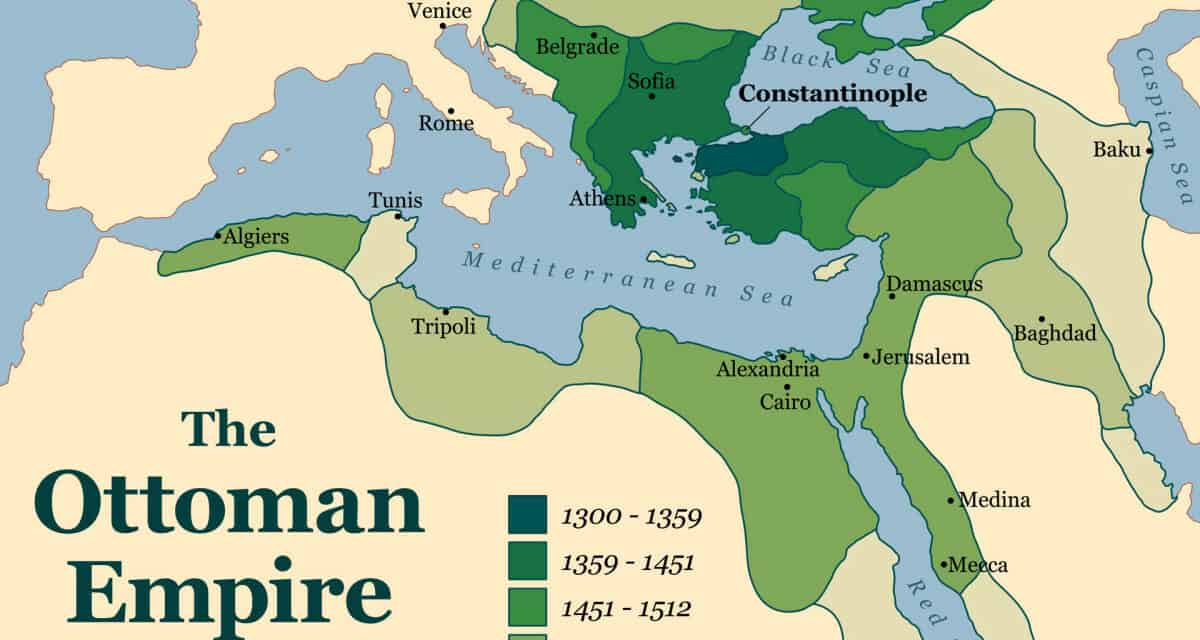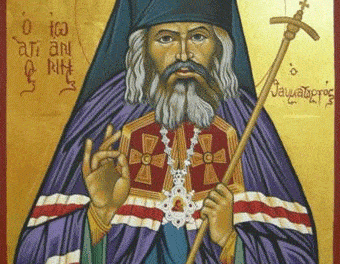The title of this episode is Coping.
It’s time once again to lay down our focus on the Western Church to see what’s happening in the East.
With the arrival of Modernity, the Church in Europe and the New World was faced with the challenge of coping in what we’ll call the post-Constantine era. The social environment was no longer favorable toward Christianity. The institutional Church could no longer count on the political support it enjoyed since the 4th C. The 18th C saw Western Christianity faced with the challenge of secular states that may not be outright hostile but tended to ignore it.
In the East, Christianity faced far more than benign neglect for a long time. When Constantinople fell in 1453 to the Turks, The Faith came under a repressive regime that alternately neglected and persecuted it.
While during the Middle Ages in Europe, Popes were often more powerful than Kings, the Byzantine Emperor ruled the Church. Greek patriarchs were functionaries under his lead. If they failed to comply with his dictates, they were deposed and replaced by those who would. When the Emperor decided reuniting with Rome was required to save the empire, the reunion was accomplished against the counsel of Church leaders. Then, just a year later, Constantinople fell to the Ottomans. Many Eastern Christians regarded this calamity as a blessing. They viewed it as liberation from a tyrannical emperor who’d forced them into a union with a heretical church in Rome.
The new Ottoman regime initially granted the Church limited freedom. Since the patriarch fled to Rome, the conqueror of Constantinople, Mohammed II, allowed the bishops to elect a new patriarch. He was given both civil and ecclesiastical authority over Christians in the East. In the capital, half the churches were converted to mosques. The other half were allowed to continue worship without much change.
In 1516, the Ottomans conquered the ancient seat of Middle Eastern Christianity in Syria and Palestine. The church there was put under the oversight of the Patriarch of Constantinople. Then, when Egypt fell a year later, the Patriarch of Alexandria was given authority over all Christians in Egypt. Under the Ottomans, Eastern Church Patriarchs had vast power over Christians in their realm, but they only served at the Sultan’s pleasure and were often deposed for resisting his policies.
In 1629, the Patriarch of Constantinople, Cyril Lucaris, wrote what was considered by many, a Protestant treatise titled Confession of Faith. He was then deposed and executed. Fifty years later, a synod condemned him as a “Calvinist heretic.” But by the 18th C, the Reformation wasn’t a concern of the Eastern Church. What was, was the arrival of Western philosophy and science. In the 19th C, when Greece gained independence from Turkey, the debate became political. Greek nationalism advocated Western methods of academics and scholarship. The Greeks also demanded that the Greek Church ought to be independent of the Patriarch of Constantinople. Conservatives wanted to subsume scholarship under tradition and retain allegiance to Constantinople.
During the 19th and early 20th Cs, the Ottoman Empire broke up, allowing national Orthodox churches to form in Greece, Serbia, Bulgaria, and Romania. The tension between nationalist and conservative Orthodoxy dominated the scene. In the period between the two world wars, the Patriarch of Constantinople acknowledged the autonomy of Orthodox churches in the Balkans, Estonia, Latvia, and Czechoslovakia.
Early in the 20th C, the ancient patriarchates of Jerusalem, Alexandria, and Antioch were ruled by Arabs. But the newly formed states existed under the shadow of Western powers. This was a time when out of a desire to identify with larger groups who could back them up politically and militarily, a large number of Middle Eastern Christians became either Catholic or Protestant. But an emergent Arab nationalism reacted against Western influence. The growth of both Protestantism and Catholicism was curbed. By the second half of the 20th C, the only nations where Eastern Orthodox Christianity retained its identity as a state church were Greece and Cyprus.
The fall of Constantinople in 1453 was viewed by Russian Christians as God’s punishment for its reunion with the heretical Rome. They regarded Moscow as the “3rd Rome” and the new capital whose task was to uphold Orthodoxy. In 1547, Ivan IV took the title “czar,” drawn from the ancient “Caesar” a proper name that had come to mean “emperor.” The Russian rulers deemed themselves the spiritual heirs to the Roman Empire. Fifty years later, the Metropolitan of Moscow took the title of Patriarch. The Russian Church then churned out a barrage of polemics against the Greek Orthodox Church, Roman Catholics, and Protestants. By the 17th C, the Russian Orthodox Church was so independent when attempts were made by some to re-integrate the Church with its Orthodox brothers, it led to a schism in the Russian church and a bloody rebellion.
Now—I just used the term “metropolitan.” We mentioned this in an earlier episode, but now would be a good time for a recap on terms.
The Roman Catholic Church is presided over by a Pope whose authority is total, complete. The Eastern Orthodox Church is led by a Patriarch, but his authority isn’t as far-reaching as the Pope. Technically, his authority extends just to his church. But realistically, because his church is located in an important center, his influence extends to all the churches within the sphere of his city. While there is only one pope, there might be several Patriarchs who lead various branches of the Eastern Orthodox Church.
A Metropolitan equates loosely to an arch-bishop; someone who leads a church that influences the churches around it.
Peter the Great’s desire to westernize a recalcitrant Russia led to an interest on the part of Russian clergy in both Catholic and Protestant theology. Orthodoxy wasn’t abandoned; it was simply embellished with new methods. The Kievan school adopted a Catholic flavor while the followers of Theophanes Prokopovick leaned toward Protestantism. In the late 19th C, a Slavophile movement under the leadership of Alexis Khomiakov applied some of Hegel’s analytics to make a synthesis called sobornost; a merging of the Catholic idea of authority with the Protestant view of freedom.
Obviously, the Russian Revolution at the beginning of the 20th C put an end to all this with the arrival of a different Western Philosophy – Marxism. In 1918, the Church was officially separated from the State. The Russian Constitution of 1936 guaranteed “freedom for religious worship” but also “freedom for anti-religious propaganda.” In the 1920s, religious instruction in schools was outlawed. Seminaries were closed. After the death of the Russian Patriarch in 1925, the Church was forbidden to name a successor until 1943. The State needed all the help it could get rallying the population in the war with Germany. The seminaries were re-opened and permission was given to print a limited number of religious books.
In the late 20th C, after 70 years of Communist rule, the Russian Orthodox Church still had 60 million members.
In a recent conversation I had with a woman who grew up in Czechoslovakia during the Soviet Era, she remarked that under the Communists the Church survived, though few attended services. Freedom of religion was the official policy under the Soviets. But in reality, those who professed faith in God were marked down and passed over for education, housing, and other amenities, thin as they were under the harsh Soviet heel. You could be a Christian under Communism; but if you were, you were pretty lonely.
Several years ago, when Russia opened to the rest of the world, I had a chance to go in with a team to teach the Inductive Study method as part of Russia’s attempt to teach its youth morality and ethics.
A senior citizen attended the class who between sessions regaled us with tales of being a believer under Communism. He looked like something straight out of an old, grimy black and white photo of a wizened old man with thinning white hair whose wrinkled face speaks volumes in the suffering he’d endured. He told us that he’d spent several stints in Russian prisons for refusing to kowtow to the Party line and steadfastly cleaving to his faith in God.
It’s remarkable the Church survived under Communism in the Soviet Bloc. Stories of the fall of the Soviets in the early ’80s are often the tale of a resurgent Church.
There are other Orthodox churches in various parts of the world. There’s the Orthodox Church of Japan, China, and Korea. These communions, begun by Russian missionaries, are today, indigenous and autonomous, with a national clergy and membership, as well as a liturgy conducted in their native tongue.
Due to social strife, political upheavals, persecution, and the general longing for a better life, large numbers of Orthodox believers have moved to distant lands. But as they located in their new home, they often transported the old tensions. Orthodoxy believes there can only be a single Orthodox congregation in a city. So, what to do when there are Greek, Russian or some other flavor of Eastern Orthodox believers all sharing the same community?
Keep in mind not all churches in the East are part of Eastern Orthodoxy. Since the Christological controversies in the 5th C, a number of churches that disagreed with established creeds maintained their independence. In Persia, most Christians refused to refer to Mary as Theotokos = the Mother of God. They were labeled as Nestorians and declared heretical; though as we saw way back when we were looking at all this, Nestorius himself was not a heretic. Nestorians are more frequently referred to as Assyrian Christians, with a long history. During the Middle Ages, the Assyrian church had many members with missions extending as far as China. In modern times, the Assyrian Church has suffered severe persecution from Muslims. Early in the 20th C and again more recently, persecution decimated its members. Recent predations by ISIS were aimed at these brethren.
Those churches that refused to accept the findings of the Council of Chalcedon were called Monophysites because they elevated the deity of Christ over His humanity to such a degree it seemed to make that humanity irrelevant. The largest of these groups were the Copts of Egypt and Ethiopia. The Ethiopian church was the last Eastern church to receive State support. That support ended with the overthrow of Haile Selassie in 1974. The ancient Syrian Monophysite Church, known more popularly as Jacobite, continued in Syria and Iraq. Its head was the Patriarch of Antioch who lived in Damascus. Technically under this patriarchate, but in reality autonomous, the Syrian Church in India has half a million members.
As we saw in a previous episode, the Armenian Church also refused to accept the Chalcedonian Creed, because it resented the lack of support from Rome when the Persians invaded. When the Turks conquered Armenia, the fierce loyalty of the Armenians to their faith became one more spark that lit the fuse of ethnic hostility. In 1895, 96, and again in 1914 when the world was distracted elsewhere by The Great War, thousands of Armenians living under Turkish rule were massacred. A million escaped to Syria, Lebanon, Egypt, Iran, Iraq, Greece, France, and other Western nations where the memory of the Armenian Holocaust lives on and continues to play an important role in international relations and the development of foreign policy.






